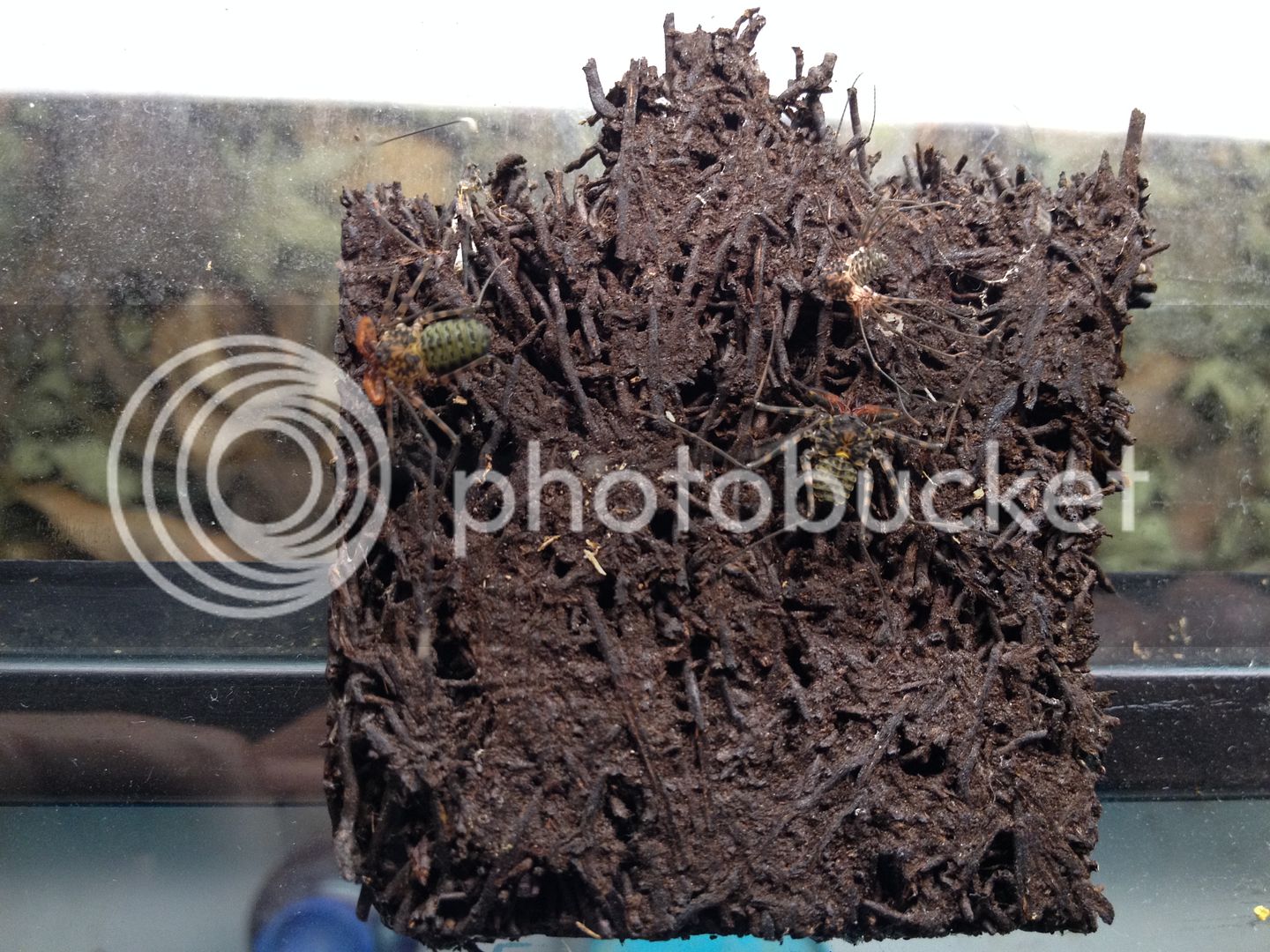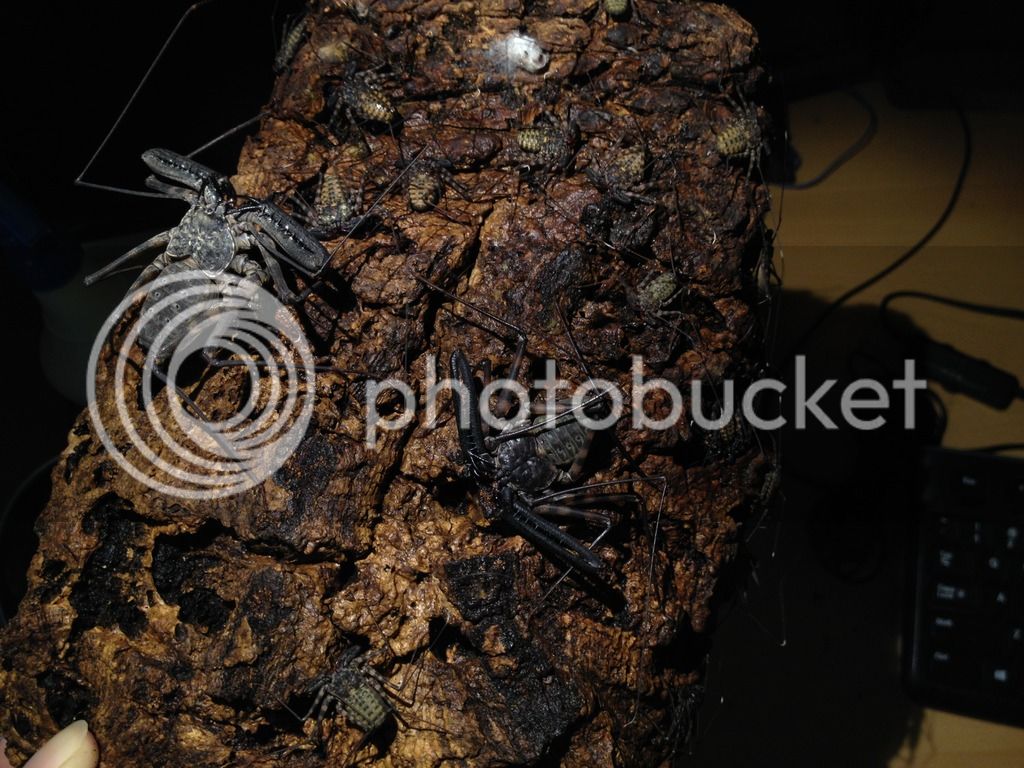Ranitomeya
Well-known member
I lost the previous batch of offspring, but my female and her cohabiting male were quick to produce another group of babies. Invasive Argentine Ants are quite a menace during the summer months when they move in to search for moisture and food. My pair of adults were somehow left unmolested by the ants, but the babies were quickly swarmed and devoured in the same cage. A liberal application of baby powder around my tanks looks messy, but it's the only thing that manages to discourage ants in the room.
Here's a picture of a second instar next to a third instar with its exuvium. It was a bit difficult to take pictures of these little guys with my iPhone since they're small and they move quickly and frequently. They sure don't increase much in size from instar to instar. It makes you wonder how old the large, wild-caught individuals we see available are. Like the previous batch, these guys live with their parents.

I've been feeding them melanogaster and hydei fruitflies and they seem to be doing well on them. They also accept small first instar roaches, but I've been having difficulty maintaining the population size of my roach colony with all the hungry mouths to feed.
Here's a picture of a second instar next to a third instar with its exuvium. It was a bit difficult to take pictures of these little guys with my iPhone since they're small and they move quickly and frequently. They sure don't increase much in size from instar to instar. It makes you wonder how old the large, wild-caught individuals we see available are. Like the previous batch, these guys live with their parents.

I've been feeding them melanogaster and hydei fruitflies and they seem to be doing well on them. They also accept small first instar roaches, but I've been having difficulty maintaining the population size of my roach colony with all the hungry mouths to feed.




